Chapter 5
For Appearance's Sake: Formatting Your Data
Now that you've gotten a handle on some of the ways you can make all that data work for you, through Excel's functions and your own self-devised formulas, you'll want to go on and think about how all those results should look— because you're likely to have to show your work to someone else, and you know what they say about first impressions. Excel makes a huge assortment of formatting options available to its users, and we're going to take a look at some of these important, easy-to-apply options now.
What Formatting Does (and Doesn't Do)
The first thing you need to bear in mind about formatting in Excel is that when you dab at its palette of possibilities you're not “doing” anything to the data. That is, when you reformat a value, you merely change the way it looks; you don't modify the value itself. Thus, whether 72 looks like Figure 5–1 or 5–2, it's still equal to 36 × 2.
Figure 5–1. Either way…A number using one type of formatting
Figure 5–2. The same number with different formatting applied
Reformatting works to change the appearance of your data, and that's all. That 72 is still usable in formulas and the like, no matter how it looks, and that's a point you'll want to remember as we proceed.
Basic Formatting
Most of Excel's formatting options have been assigned to the Home tab, where they're easily accessible. Start with the Font button group (shown in Figure 5–3), each of whose buttons introduce a formatting change when clicked.
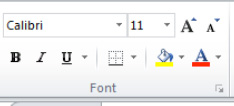
Figure 5–3. The Font button group
Many of the buttons here may look familiar to you if you've used Microsoft Word, and they do similar, though not identical, things here. Note the default Calibri 11-point font, the same one that starts you off in Word. Points are units of typographic measurement—units of height, to be exact—of which there are 72 per inch. Thus, 12-point text is one-sixth of an inch in height, for example.
Changing the Font
The basic principle behind making formatting changes is known as select-then-do; that is, you select a cell or cells (or even some of the text in a cell if that's what you want to change), and then execute the change. Thus, to change the fonts in a range of cells
- Just select the range.
- Click the down arrow beside the font field (where it currently says “Calibri” in Figure 5–3). This will present the
Fontdrop-down menu, as shown in Figure 5–4.
- Just click the font you want, and you've made the change (you can reveal more fonts by clicking the arrows at the right side of the font window and scrolling down the font list).
NOTE: When you scroll down the Font drop-down menu in search of a new font, simply hovering your mouse over a new font will change the selected cells to that font in preview mode, letting you know what the cells will look like if you actually click that font. The same previewing feature works with many other formatting options, too, such as font size, and fill and font color; but not others, such as the bold, italics, or bordering-cells options.
Notice that Figure 5–4 shows a range that seems to contain nothing in it. It's true—the range is blank, but that's not a problem. That's because you can format a range prospectively, even before it contains any data. When you actually type the data, it will take on the changes you've brought about. Note also when you make a formatting change on a designated range, the range remains selected in case you want to make additional changes there.
Changing the Font Size
In much the same way, you can change the font size of the data. Just select your range and click the down arrow alongside the font size field (currently showing the default 11 points), and click the desired size.
NOTE: Remember that if you want all the cells in the worksheet to acquire the same new font size, you can click the Select All button. Once all the worksheet cells are selected, enter the new size. If you want to change the font for all the cells in a particular row, click its row header; all the cells will be selected. To do the same to a column, click its heading.
Note, on the other hand, that the Font drop-down menu lists 11-, 12-, and 14-point sizes, but not 13. That's not a matter of superstition; rather, it's because Excel simply lists commonly used font sizes. If you really want your range to display 13- or 17-point-sized data, you can do the following:
- Click in the font size field.
- Type the size you want, as shown in Figure 5–5.

Figure 5–5. Unlisted number: Entering a 17-point font
- Then press Enter to finalize the change.
NOTE: When data is enlarged with a new font size, the row heights of the affected data automatically increase if necessary to make room for the upgrade. Excel will not allow data to barge vertically into a cell above it, even though it does allow text to move horizontally into a cell to its right.
Now what about those two As stationed to the right of the font fields? They're called Increase Font Size and Decrease Font Size, respectively (see Figure 5–6).

Figure 5–6. A pair of quick ways to increase or decrease font size
Click the larger A on a range of cells, and the data there will receive a font size boost up to the next available interval in the font size window. That means that if the current size in a cell or cells is 12 points, clicking the large A will pump the size up to 14, which is the next higher size recorded in the drop-down menu. If you click the smaller A, those same 12-point cells with be downsized to 11 points, the next lower interval listed.
Using Bold, Italics, and Underline
Now let's turn to the B, I, and U buttons (see Figure 5–7).

Figure 5–7. B, I, and U (bold, italics, and underline)
These buttons represent bold, italics, and underline, respectively—and again, to format data with any or all of these effects, select the cells in question and just click the appropriate button(s). These three buttons behave as toggles, meaning that by clicking them in succession you turn their formatting effects on and off. Click the B button once, and the cells you've selected turn boldface; click it again, and the bold effect disappears.
Note, by the way, that the U button is accompanied by a drop-down arrow. Click it, and this little menu makes its way onscreen, as shown in Figure 5–8.

Figure 5–8. Between the (under)lines
Note the first of the two menu options is nothing but the default underline—what you'd normally get if you just clicked the U straight away. So why do you need it? Because if you click the Double Underline option, you'll indeed draw double underlines beneath data in the selected cells. Additionally, the Double Underline button will then appear in the Font button group, replacing the standard Underline, at least until you exit Excel completely or reuse the single underline (see Figure 5–9).
Figure 5–9. Seeing double
Determining a Cell's Formatting
You can learn a lot about the formatting of a particular cell by simply clicking in it and then scanning the information conveyed about it in the Font button group. So, if cell C12 is currently underlined and boldfaced, and features a Bauhaus 93, 12-point font, click C12 and you'll see this information in the Font button group, as shown in Figure 5–10.

Figure 5–10. What's happening in cell C12. The data there is boldfaced and underlined, and exhibits the Bauhaus 93 12-point font.
Notice that the B and U buttons are illuminated, telling us that those effects are activated in C12; and we're also told about the Bauhaus 93 12-point font.
Adding a Border
To the right of the U button you'll find the Borders button, which doesn't format cell data as such, but rather lets you inscribe lines around some or all the four borders of cells (see Figure 5–11).

Figure 5–11. Borderline call: The Borders drop-down menu
Again, the technique for drawing borders is the same as for other kinds of formatting:
- Select the cells.
- Click the
Bordersbutton, and select the border option of your choice from the drop-down menu.
Play around with these and you'll see how they work; particularly the All Borders and Outside Borders selections, which you may decide to use often.
All Borders draws borders around all the selected cells. This option can be particularly useful for emphasizing a particular group of cells (see Figure 5–12).

Figure 5–12. We've got you covered: The All Borders option surrounds all the selected cells' borders with lines.
Outside Borders limns a border around the perimeter of a range of cells, not individual cell borders. It's effective for singling out a range of cells for emphasis (see Figure 5–13.
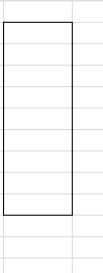
Figure 5–13. The Outside Borders option
You'll want to know about the No Border option, too, which removes borders around selected cells if you decide they're no longer needed:
- Just select cells exhibiting the borders.
- Click
No Border, and the borders will vanish.
If you're wondering why you couldn't simply click the Undo button to achieve the same result, you could—maybe. Remember that Undo works in sequence, and if you decide you want to remove some cell borders well after you've drawn them, you'll have to undo all the commands you've executed in between, too.
NOTE: You can change the color of the borders by clicking the Line Color option on the Borders drop-down menu. You can also modify the texture and appearance of the line with the Line Style option, also available on that menu (see Figure 5–14).

Figure 5–14. The Line Color and Line Style options
Adding Color to Your Cells
That leaves us with two remaining buttons in the Font button group: the Fill Color and Font Color buttons. Fill Color, as represented by the pail icon, has nothing to do with the fill handle discussed earlier; rather, it fills the selected cells with a color you choose from a drop-down menu (see Figure 5–15).
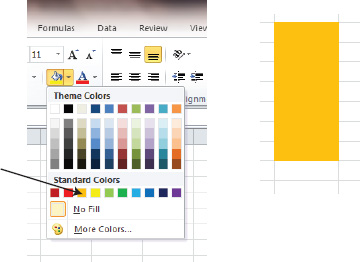
Figure 5–15. Click the arrow alongside the Fill button to produce this drop-down menu and result.
Use this option when you want to impart emphasis to selected cells. Note that the color you see right beneath the pail icon (the color underlining the pail) is the current fill default color—the color that will appear in the selected cells if you click the Fill Color button instead of its drop-down arrow. And if you want to turn off the current fill color tinting any cell(s), just select the cells in question and click the No Fill option.
NOTE: If you're artistically inclined, you can devise subtler shadings with the More Colors… option, which when clicked lets you modulate color values and produce exactly the hue you want.
The Font Color button, represented by the A, changes the color of the data in the selected cells. It too sports a drop-down menu exhibiting the same color options displayed in the Fill Color menu, as shown in Figure 5–16.

Figure 5–16. The Font Color drop-down menu. The Automatic option represents the default font color, black.
Just select your cells and click away.
NOTE: The Automatic option, when clicked, returns the cells' font color to the operative default color, black.
Adding Extra Formatting
Finally, note that the Font button group has one of those dialog launcher arrows—that little indicator squirreled in the lower right of the group (see Figure 5–17).

Figure 5–17. There's that dialog box launcher again.
Click it and you'll bring up what's called the Format Cells dialog box (shown in Figure 5–18).

Figure 5–18. The Format Cells dialog box. Note the various tabs.
Note the various font-formatting options here, most of which you've already seen in button form in the button group. There are, however, a few additional possibilities here—namely in the Effects area, where you can draw a strikethrough line through data. Figure 5–19 shows an example.

Figure 5–19. The strikethrough effect
NOTE: The Format Cells dialog box consists of numerous tabs, each one housing a different variety of formatting possibilities. This same dialog box appears again when you click the dialog box launcher in the Alignment and Number button groups, but these groups highlight a different tab in Format Cells.
Aligning (and Realigning) Your Data
The group to the immediate right of the Font button group is called the Alignment group. It's shown in Figure 5–20.

Figure 5–20. The Alignment button group
Its buttons don't quite change the appearance of data; rather, they reposition data in its respective cells. Recall that numeric data, or values, appear by default at the right edge of cells, while text data is positioned, or aligned, at the left. The Alignment buttons allow you to relocate the data to different positions, called orientations—both horizontal and even vertical—in cells.
Changing Horizontal Alignment
The trio of buttons in the lower left of the group (see Figure 5–21) controls the horizontal placement of data (you'll see these in Word, too).

Figure 5–21. The horizontal alignment buttons
What they do is pretty self-evident. Here's a quick exercise involving text alignment:
- Click the far left button,
Align Text Left, after you've selected a range of cells, and their contents will be shifted to the cells' left edges (of course, if you're working with text data, that's where they'll be anyway). - Click the next button along, called
Center, and the data will zip to the center of its cells. - Click the third of the three,
Align Text Right, to shunt the data to the right edge.
Thus, if you've entered values, the buttons will bring about the kinds of results shown in Figure 5–22.

Figure 5–22. Right, left, and centered values
Keep in mind that many people like to center values down a column, enjoying the symmetrical effect that centered data brings. But you may want to think about that decision, because if your data contains values of different lengths you can wind up with something like what's shown in Figure 5–23.
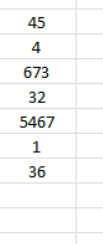
Figure 5–23. Out of whack: What centered values can look like
You see the problem—but it's your call.
Changing Vertical Alignment
The next set of buttons, Top, Middle, and BottomAlign do something more exotic (see Figure 5–24).

Figure 5–24. The vertical alignment buttons
They let you align data vertically, enabling you realize the kind of effect shown in Figure 5–25.

Figure 5–25. The sky's the limit with the Top Align button
Now, in order to make that happen, you need to learn how to heighten a row. We've already talked about widening a column; row heightening works in a similar way:
- Move your mouse above the lower boundary of the row you want to heighten (see Figure 5–26).

Figure 5–26. Placing the cursor here with let you heighten row 15.
- Click and drag the boundary down until the row achieves the desired height. Release the mouse.
- You can heighten multiple rows at the same time by dragging atop adjoining row headers (see Figure 5–27).

Figure 5–27. Heightening several rows simultaneously
- Then drag any one of the selected row boundaries to the desired height and release the mouse. All the rows will acquire the same new height.
- Click anywhere to turn off the blue selection color.
- If you've dragged too far you can also execute a row autofit by double-clicking a row's lower boundary.
Once you've completed that task, all you need to do is select your data and click one of the Vertical Align buttons to bring about the effect you want. Of course, Bottom Align is Excel's default—data will automatically position itself on the bottom of a row unless you decide to make a change.
Changing Data Orientation
The next alignment button, called Orientation, will let you do something even more unusual: incline data at an angle. Click its drop-down arrow, and you'll see the options shown in Figure 5–28.
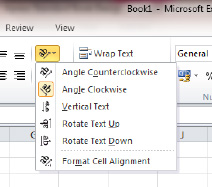
Figure 5–28. Everybody's got an angle: The Orientation drop-down menu
These options are pretty cool, but need to be used judiciously, as they reposition the data at severe angles. Select a cell and try the various orientations. You'll get some pretty striking results, which can work with both text and values. Just make sure that your audience will be happy to see a value that looks like Figure 5–29, for example.

Figure 5–29. That number—433—can still be used in formulas.
That's 433, and appearances to the contrary, that value is lodged in only one cell. All you need do to achieve this effect is select the cell(s), and select the Vertical Text option (shown previously in Figure 5–28).
The last drop-down option, Format Cell Alignment, will deliver you to the same Format Cells dialog box shown earlier—only this time the Alignment tab is pushed to the foreground, as shown in Figure 5–30.

Figure 5–30. Even more alignment options
Among other things, you'll see an Orientation area at its right edge. If you type in a number in its Degrees field, the data in cells you've selected cells will be pitched at just that angle (note the arrow in Figure 5–31). Also, if you click cells containing angled text and type 0 in the Degrees box, the data will be restored to its original, unangled appearance.

Figure 5–31. Select the cells you want to restore, type 0 degrees in the Degree field (you have to actively type 0 even if it's already displayed), and click OK.
Indenting Data
The next two buttons are titled Decrease Indent and Increase Indent, respectively, and all they do is push data in their cells slightly to the left or right by small increments, much in the way that the indent option works in Word. Each click advances or pulls back the data a bit more in their cells. Between you and me, I don't recall ever having used these buttons in an actual worksheet—but they're there (see Figure 5–32).
Figure 5–32. The Indent buttons
Wrapping Text
The next button, Wrap Text, is a good deal more useful. Clicking Wrap Text is the option of choice when you enter text in a cell that extends beyond its current column width and you don't want to widen the column. We've seen this problem before, of course, but Wrap Text proposes a different solution:
7. Enter the phrase shown in Figure 5–33 in cell B19.
Figure 5–33. Getting carried away: Too much text
8. Click back in cell B19 and click Wrap Text. You'll see what's shown in Figure 5–34.

Figure 5–34. Back where it all belongs
Wrap Text treats the current column width as a fixed margin and heightens the row instead, in order to confine the text within that margin. Wrap Text is thus an option you'll turn to if you need to maintain a column's width as it presently stands.
Adding a Title with Merge and Center
The final alignment option, Merge and Center, provides a set of suboptions in its drop-down menu, as shown in Figure 5–35.
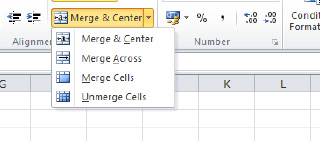
Figure 5–35. Merge and Center: Getting cells together
Merge and Center was devised to solve an old spreadsheet problem. Say you have a worksheet that currently looks like Figure 5–36.
Figure 5–36. Want that title to be centered among the month names? Stay tuned.
What if you want the Yearly Sales Totals title to be centered across the 12 months? Here's how to do it:
- Say the month names you see in the screenshot span the range A2:L2 (remember, you can enter these names using the fill handle), and that the title Yearly Sales Totals appears in cell A1. Select cells A1:L1—that is, the range directly above all the months, in the row containing the phrase Yearly Sales Totals.
- Now click the
Merge and Centerbutton directly (no need to activate the drop-down menu), and you'll see what's shown in Figure 5–37.
Figure 5–37. Middle ground: The title is precisely centered above the months.
Merge and Center does two things:
- It combines, or merges, all the selected cells into one megacell.
- It then centers the text across it.
This option spares you the challenge of figuring out exactly where to find the center point above the months.
NOTE: Merge and Center only works if the data you want to center is in the leftmost cell of the range you want to merge, and if the other cells in the range are empty. If any of these cells also contain data, their contents will be deleted.
You're far less likely to use the other two active merge options—Merge Across and Merge Cells.
Merge Acrosslets you select a range consisting of several rows and columns, and turns each individual row into a single cell (see Figure 5–38).

Figure 5–38. Note the merge effect: Tuesday and July now each occupy a large, merged cell.
Merge Cellslets you turn any range (which can include both rows and/or columns) into one supercell.
But as with Merge and Center, these only work properly when data is positioned in the leftmost cell of the selected range (these commands will work with completely empty ranges, however).
Finally, the awkwardly named Unmerge Cells option restores any merged cells back to their original state. Select the merged megacell, click Unmerge Cells, and all the original cells will reappear (see Figure 5–39).
Figure 5–39. Now Tuesday is back in its original cell, and all the cells that had been merged with it are back, too.
Inserting, Deleting, and Hiding Columns and Rows
Merging cells hints at some other important ways in which you can modify the structure of the worksheet itself, in addition to the data that the worksheet contains. There may be times when you need to insert or delete a row or column in the worksheet. Say you've constructed a list of employees along with identifying column headings, as in Figure 5–40.

Figure 5–40. The headings for an employee directory. Note the columns have been autofit.
It then occurs to you that you've inadvertently omitted a Salary field, which you want sandwiched between Telephone Number and Dept. You'll need to insert a column.
Inserting a Column or Row
As usual, there are several ways in which to do this. Here's one:
- To insert a column, right-click anywhere on the column heading to the immediate right of where you want the new column to be inserted. In the example in Figure 5–41, you'd right click the E column heading, because you want Salary to be installed to the left of Dept.

Figure 5–41. After right-clicking the E heading, click the Insert option.
- Click Insert, and the new column will appear, as shown in Figure 5–42.

Figure 5–42. Now you can type “Salary.”
A different method allows you to insert a column by clicking anywhere in the column to the right of where you want the new one inserted:
- Click a cell in the column to the right of where you want to insert the column.
- Then click the
Hometab, and chooseInsert
Insert Sheet Columnsfrom theCellsbutton group, as in Figure 5–43.
Figure 5–43. An alternative way to insert a column. Note the Insert Sheet Rows option, too.
You'll get the same result—the new column.
- Here, the first method requires you to right-click anywhere in the row directly beneath where you want the new one to appear. Thus, if you want to insert a new row between rows 10 and 11, you right-click row 11, as in Figure 5–44.
- Then just click Insert.

Figure 5–44. Just click Insert, and the new row will appear above the current row.
To apply the second method to rows, do the following:
- Click anywhere in the row directly beneath where you want the row to appear.
- Click the
Hometab, and clickInsert
Insert Sheet Rowsfrom theCellsbutton group.
Inserting Multiple Columns or Rows
If you need to insert several columns or rows at the same time, you first need to select as many column or row headings as correspond to the number you want to insert. Thus, if you want to insert three columns, select the three column headings to the right of where you want the new ones to appear by simply dragging your mouse across the headings (not the worksheet cells), as in Figure 5–45.

Figure 5–45. Here, columns C through E have been selected; thus, the three new columns will appear to the right of column C.
You can then utilize either of the two insert methods just described (i.e., clicking Insert or Insert Sheet Columns). For rows, select multiple rows directly beneath where you want the new rows to appear.
What Inserting Does to Formulas
Inserting columns and rows may or may not impact existing formulas on the spreadsheet. If cell D12 contains
=AVERAGE(A12:C12)
and you insert a column to the left of column D, the expression won't be rewritten. It will continue to read =AVERAGE(A12:C12), even though it now finds itself in cell E12. Excel tries to maintain the original formula relationships in the face of row and column movement. And that means that if you were to move all the values in cells A12:C12 to A5:C5 instead, you'd see
=AVERAGE(A5:C5)
Again, that's because Excel assumes you still want to compute the average of those numbers, even though they've be moved.
Deleting Columns and Rows
The general approach to carrying out column or row deletions is, again, to select the columns or rows you want to delete using the selection techniques just described. Again, you can call upon either of the two insert methods, but this time of course you'll click Delete (see Figure 5–46).

Figure 5–46. Where to delete columns or rows. Note that in the second technique you'll click the Delete button alongside the Insert button.
Just keep in mind that if you're deleting cells whose data contributes to a formula, that formula will suddenly have nothing to work with—and instead of a result, you'll be left with an error message in the cell.
Hiding Rows and Columns
It's not unusual for Excel users to want to hide selected columns or rows—not so much in order to maintain the secrecy of the data, but to improve the appearance of a spreadsheet; perhaps columns with complex formulas don't need to be seen, or perhaps you'll want to hide those formulas so that you won't accidentally overwrite them; but if you do hide them, remember that all the data posted there remains active, and any cell references to them remain in force, too.
Again, there are two standard techniques for hiding. Here's the first:
3. Right-click the column or row heading you want to hide.
4. Click Hide in the resulting context menu (again, you can drag across multiple headings), as in Figure 5–47.

Figure 5–47. Where to hide columns or rows
Your worksheet will then exhibit a gap where the hide was executed, as shown in Figure 5–48.
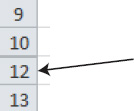
Figure 5–48. Row 11 isn't there, but its data is still usable.
The second technique for hiding columns and/or rows is as follows:
5. Select what you want to hide.
6. Click the Home tab, and then choose Format ![]()
Hide & Unhide ![]()
Hide Rows or Hide Columns from the Cells button group (see Figure 5–49).

Figure 5–49. An alternative way to hide columns or rows
NOTE: The second technique lets you select columns/rows to be hidden either by clicking on column or row headings or clicking anywhere in the column(s) or row(s) you want to hide.
Unhiding Columns and Rows
Unhide is one of those awkward Excel verbs, but that's the description for bringing back hidden columns or rows. Now, because the hidden areas can't be clicked directly—they're hidden, after all—you need to select columns or rows on either side of the hidden elements. Thus, if column K were hidden, you'd drag across headings J and L, as in Figure 5–50.

Figure 5–50. Trying to get back column K
Then right-click anywhere in that blue selection area and click Unhide (see Figure 5–51).
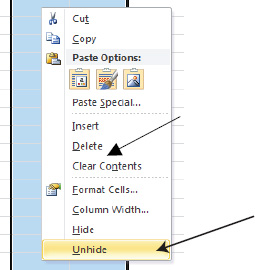
Figure 5–51. Just click Unhide, and K will reappear.
Alternatively, click the Home tab, and choose Format ![]()
Hide & Unhide ![]()
Unhide Rows or Unhide Columns from the Cells button group.
NOTE: If you‘ve hidden the A column, there will be no column to its left that you can select. Thus, you need to click the Select All button to the left of A, which selects the entire workbook. Then right-click anywhere and click Unhide on the context menu.
Inserting and Deleting Cells
You can also insert and delete selected cells, not just entire rows and columns—a possibility that isn't quite as obvious. If you click in cell A12 and carry out the Insert Cells command, for example, you'll push A12 down a row—but you won't push down row 12 in its entirety. Only the A column will be affected by the command. Any data in cell B12 will remain there, for example.
To insert or delete cells, select in the cell or cells with which you're working and either right-click the selected area and click Insert…, or click the Home tab and select the Insert ![]()
Insert Cells… option from the Cells button group (see Figure 5–52).

Figure 5–52. Here, cells N8:N12 have been selected.
You'll see the dialog shown in Figure 5–53. If you click OK on the Shift cells down option, cells N8:N12 will be bumped down five rows—equal to the number of rows in N8 through N12. But no cells in other columns in the worksheet will be affected.

Figure 5–53. The Insert cells dialog box
To delete selected cells, select the cells you wish to delete and either right-click the selection and click Delete… or click Delete Cells… in the Cells button group (see Figure 5–54).

Figure 5–54. Where to begin deleting selected cells
Either way, you'll see the dialog shown in Figure 5–55. Just click the desired choice. Note that in the screenshot selection the cells' deletion would move the cells currently in O8:O12 one column to the left, so that they become N8:N12. You may have to think about this one—or better yet, experiment on a worksheet.

Figure5–55. The Delete cells dialog box
NOTE: Deleting cells does exactly that—the command deletes entire cells, not just the contents of the cells.
Formatting Values: Making the Numbers Look Good
Most of the work you'll do with Excel will likely be numbers-based, and many of the formatting options you need to know about impact numerical data only. Excel's Number button group (see Figure 5–56) contains a raft of ways to represent values that will make your data more meaningful.
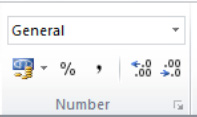
Figure 5–56. The Number button group
NOTE: Unlike the B, I, and U font format buttons, the first three buttons in the Number button group (Accounting Number Format, PercentStyle, and Comma Style) are not toggles—that is, clicking any of these twice does not alternately turn their effects on and then off. We'll get to some ways you can remove them soon.
Turning Values into Currency
When you need to format numerical data so that it appears in currency form—dollars, pounds, euros, or just about any other denomination you can think of—just go to what's called the Accounting Number Format option, represented by the button shown in Figure 5–57.

Figure 5–57. Where to turn values into currency formats; note the dollar sign.
Just select the cells you want and click that button. The values should take on the currency format of your country (that country-specific setting should have been established by your computer's control panel before you purchased or when you first configured your PC), and exhibit these default characteristics:
- The indigenous currency symbol
- A comma for any value exceeding 999
- Two decimal points to signify cents, pence, or whatever the case may be
Click the Accounting Number Format button on cells containing the values 4523, 75, and 2, and you'll see what's shown in Figure 5–58.

Figure 5–58. Cashing in: Where to initiate the Accounting Number Format
Looking for additional currency symbols? Click the down arrow alongside the button and you'll see what's shown in Figure 5–59.

Figure 5–59. Currency exchange: Additional currency symbols
And here we need to issue a reminder. Substituting a $ for a £ in a value does not alter the numerical value of the data you've originally entered. In strictly mathematical terms, $4,523.00 is equal to £4,523.00; Excel won't calculate any currency exchange rates or anything of the sort. The currency symbol is just an embellishment of the number you wrote (as is the comma and the two decimal points). These are all format changes, and to repeat the declaration I issued at the outset of the chapter, formatting only changes the way a number looks.
If you need additional proof, do the following:
- Enter 4523 in any cell.
- Dress it up in a currency format.
- Click back in the cell and direct your attention to the formula bar.
While your cell will display $4,523.00, the formula bar will reveal 4523.
And if you need still more symbols—if you're trading in Latvian lats or Bulgarian levs or any of a host of other international currencies, click the More Accounting Formats… option, shown previously, and you'll be brought to the dialog shown in Figure 5–60.

Figure 5–60. Scrolling for dollars … and other currencies
Scroll that ample list, and select your currency. Then click OK.
NOTE: The Currency format option in Figure 5–60 is distinguished from the Accounting format option by the way it positions the currency symbol. In the accounting format, the symbol is always lined up in the same place. With currency, the symbol is always placed right alongside the value. In Figure 5–61, the first column of values exhibits the accounting format, and the second shows the currency format.

Figure 5–61. Symbolic gestures: Accounting and Currency formats
Working with Percentages
The next number button, Percent Style, is represented by—surprise—the percent symbol (see Figure 5–62).
Figure 5–62. The Percent Style button
Percent Style represents a number as a percentage, and as a result can be a bit tricky. Again, you just select the desired cell(s) and click the Percent Style button. Thus, the number 0.34 would appear as follows:
34%
That's easy enough, but keep in mind that the number 1 expressed in percentage terms is 100%, not 1%. If you're expecting that result, you'll have to enter .01 in the cell before you click Percent Style.
NOTE: If you actually type the percent symbol alongside a value instead of clicking Percent Style, you can type 1% and it will mean 1%, and will appear that way in the formula bar.
Punctuating Values
The Comma Style button actually does two things to the values you select:
- It adds a comma to any value exceeding 999.
- It posts two decimal points.
Thus, click the button on a cell containing 56802, and you'll get 56,802.00.
Formatting Decimal Points
The final two buttons on the lower tier of the Number button group are Increase Decimal and Decrease Decimal, important options that require a bit of introduction. As its name suggests, Increase Decimal adds a decimal point to a value with each click. In the case of a whole number, say 74, clicking Increase Decimal point results in
74.0
in which no real additional value is expressed. But if you had written the formula =4/7 instead, you'd originally see
0.571429
However, click Increase Decimal here, and you'll see
0.5714286
This adds a degree of additional precision to this repeating decimal.
NOTE: The number of decimal places you'll initially see depends on the current width of the cell, the current font size, and the nature of the fraction you're working with (e.g., 1/2 vs. 1/3. The former will appear by default as 0.5).
On the other hand, if you narrow the column in which the preceding number appears, Excel will reduce its number of decimals so that you can continue to see the number. But it will also round the decimal off. Narrow the column here and you'll see
0.57143
Narrow it some more and you'll see
0.5714
and so on.
By the same token, type 4.67 in a cell followed by Decrease Decimal and you'll see
4.7
Click Decrease Decimal again and you'll see
5.0
But mathematically, that value is still really worth 4.67. Multiply it by 2 in a formula and the answer will come to 9.34, not 10. Again, we're only formatting the value, not changing its actual quantity.
Working with Dates: Dates Are Numbers Too
Enter the expression 3/4 in a cell and you may be in for a surprise. You know that 3/4 can't qualify as an actual fraction, because you've written it without the equal sign. So maybe it's just a bit of text, you may surmise. But it isn't; Excel will treat is as a date.
Depending on where in the world you live, that expression will be treated as either March 4 or April 3—but either way, it's a date. That's because Excel has decided that 3/4 and expressions like it will be regarded by default as a date, and assumes the date occurs during the current year—because people often like to write dates that way.
Treating 3/4 as a date is one instance of what's called Excel's general format, the default worksheet setting. The general format tries to understand what you have in mind when you enter data in a cell—before you've carried out any of the formatting changes discussed previously. Thus, Excel makes an educated guess about that 3/4, assigning it the status of a date unless and until you tell it otherwise.
But what you really need to know about dates is that they're numbers. In fact, March 4, 2011 is actually 40606—but what in the world does that mean? It means this: each date is assigned a sequenced number denoting the total days separating that date from January 1, 1900. Thus, March 4, 2011 arrived 40606 days after the baseline January 1, 1900—and that's a very good thing to know, because now you can determine the number of days between any two dates.
Here's an example:
- Enter 3/4 in cell A2.
- Then enter 1/15 in A3.
- In cell A4, write =A2-A3, and you answer will be 48.
The 48 represents the number of days between January 15, 2011 and March 4, 2011, a result made possible because the later date has that numerical value of 40606, and the January date is really 40558. And 40606 – 40558 = 48.
Excel is well stocked with additional ways to format dates:
- Click that January 15 entry in cell A3.
- Then click what's called the
Number Formatdrop-down menu (see Figure 5–63). This menu shows you what A3—which again is really 40193—would look like as per some of Excel's other formatting options. - Click the second
Dateoption on the menu, and A3 will then display 1/15/11, replacing the current 1/15.
Figure 5–63. The Number Format menu: Different guises for the same value
- If you click the
More Number Formats…options at the bottom of the menu, you'll be returned to the trustyFormat Cellsdialog box, this time with theDateoption already selected (see Figure 5–64).
Figure 5–64. Dates on the menu: Date options in the Format Cells dialog box
- Choose whichever option you like, and then click
OK. They're all different guises for the same number. And note that when you click any of the formatting possibilities, you'll see a preview of what the date is going to look like if you clickOK, as in Figure 5–65.
Figure 5–65. What you see is what you are going to get: Previewing a data format. The Sample area reveals the preview (see arrow).
Here's another tip: instead of directly entering 1/15 in a cell, you could have also entered 1-15. Excel's general format will also treat that expression as a date. And if you enter a date from the current year, you don't need to enter any reference to the year; 1/15 will be read as 1/15/11. But if you want to enter the same date from, say, two years ago, you'll need to enter 1/15/09.
Customizing Number Formats
If you're not quite happy with any of the formatting suggestions supplied by the Number Format drop-down menu, there are still more ways to remake the appearance of values.
The Special Formats Option
The Format Cells dialog box lists a Special option, which automatically formats values with four built-in looks that you can apply to values (see Figure 5–66).
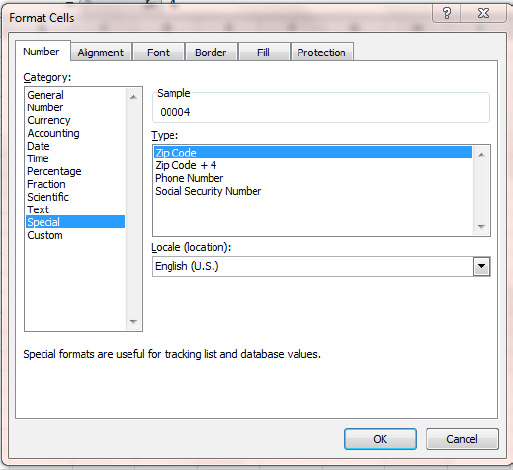
Figure 5–66. The Special formatting option
The Social Security Number option, for example, lets you type the nine-digit numbers without those pesky dashes that punctuate the numbers. Thus, if you select the desired cells and click Social Security Number, you'll be able to type 123456789, and have it automatically rewritten as 123-45–6789, sparing you the slightly odious task of remembering exactly where to enter those dashes.
Similarly, the Phone Number option will allow you to type 1234567 and immediately revise it to 123-4567.
The Custom Option
But there's still more. Excel's Custom option gives you the freedom to fine-tune numerical appearances precisely to your liking. While some Custom options are rather complex, there's one I use often that's quite simple.
You've probably noted by now that when you type a decimal value—say, .37—Excel ascribes this default format to it in its cell:
0.37
I don't know about you, but I don't like that leading zero; I want to see .37, and nothing more.
- To achieve that appearance, select the cells you want to reformat and select
Custom. You'll see the dialog shown in Figure 5–67.
Figure 5–67. Decimal derring-do: About to excise that leading zero
- Then click the 0.00 option, the third one down the
Typelist (see the arrow in Figure 5–68).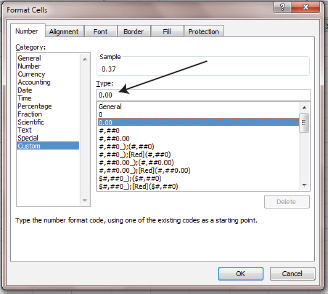
Figure 5–68. Note that the Type field records the current format in the cell, with the leading zero in place.
- Then click in the
Typefield and simply delete the leading zero. Note theSamplearea shown in Figure 5–69.
Figure 5–69. The zero has been zapped.
- Click
OK, and all decimal values in the selected cells will lose that zero.
NOTE: The preceding customization won't change a value such as 3.37; it will only eliminate the zero on decimals that have no values to the left of the decimal point (e.g., 0.37 or 0.98).
Experimenting with the Custom options and observing how the content in the Sample area changes should prove instructive and useful.
Copying Formats (Not Data) with the Format Painter
Let's say you've formatted a cell with these characteristics:
- Using an Algerian 19-point font
- Colored red
- Italicized
- Festooned with an orange background
Something like Figure 5–70.

Figure 5–70. Have it your way: Your customized format
Hey—it's your worksheet. And you're so enamored with this collection of embellishments that you want to bring it to other cells. Of course, you could select those cells and then click the various options that gave rise to that thing of beauty in the preceding screenshot—but that's a lot of clicks. What you can do instead is copy and paste the format of that cell to other cells with the format painter. Here's how:
- Select a source cell containing the formats you want to copy to other cells, as in Figure 5–71.

Figure 5–71. The source and destination cells
- Click the
Format Painterbutton in theClipboardbutton group (on theHometab). The cursor will be accompanied by a paintbrush icon, as in Figure 5–72.
Figure 5–72. Given the brush-off: The format painter cursor
- Click and drag onto destination cells, as in Figure 5–73.

Figure 5–73. Paint job: The format painter at work
- Release the mouse. The destination cells should display the source formatting, as in Figure 5–74.
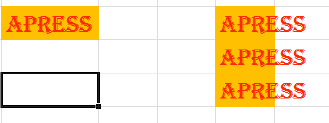
Figure 5–74. The destination cells, after the source format has been copied to them. You might now want to widen their column.
The format painter copies only the formats characterizing the source cell, not the cell's data. It provides a handy way to export the formats into other cells, while leaving the destination-cell data intact.
NOTE: After you apply the format painter once to destination cells, the paintbrush disappears, and you're back to the normal data entry mode. If you want to use the format painter to copy formats repeatedly to different ranges of cells, double-click the Format Painter button. The paint brush will remain in effect, and you can drag on as many different ranges as you wish. To turn the paintbrush off, just press the Esc key.
Applying Ready-Made Formats with Styles
There may be times when you're having difficulty coming up with a nicely designed format that suits your data, and you may need something quickly—say, for a meeting or a presentation. Excel's Cells Styles option presents a large series of style options at the click of a mouse.
- First select the cell(s) you want to restyle.
- Click the
Cell Stylesdrop-down arrow in theStylesbutton group, and you'll be presented with the dialog shown in Figure 5–75.
- Click any of these and see how your data looks (or just hover your mouse over the style option that interests you; the cell preview mode operates here, too).
- If you reconsider your style selection, just summon that style gallery again and click another one (see Figure 5–76).

Figure 5–76. Just click a different style if you're not happy with the first one.
Customizing Your Own Style
You can also design your own styles. Let's say you want to turn that lovely Algerian, 19-point concoction into a style:
- Format a cell as you wish. Here I've used
- An Algerian 19-point font
- The color red
- Italics
- An orange background
- Select it.
- Click the
Cell Stylesoption (in the lower left of the New Cell Style…
New Cell Style…CellStylesdialog box). You'll see the dialog shown in Figure 5–77. Note that the cell's formatting attributes are recorded in theStyle Includesarea.
Figure 5–77. DIY style
- Type your own style name in the
Style namefield and clickOK. - Click the
Cell Stylesbutton again and you'll see the dialog in Figure 5–78.
Figure 5–78. My style, duly recorded
Not a catchy name, but you see the style listed under the Custom heading at the top of the dialog box. To delete a user-devised style, right-click its name and click Delete.
Applying Styles Quickly: Another Way to Access Formatting Options
As already stated, Excel isn't stingy about providing the user with various ways to do the same thing, and one way to carry out important formatting options uses the right mouse button click. Right-click a cell you want to format and you'll see what's shown in Figure 5–79.

Figure 5–79. The mini-toolbar, featuring formatting's greatest hits
Two objects suddenly appear:
- What's called the context menu, that tall column listing various command options, which by and large you can also access on the ribbon (e.g.,
CutandCopy) - The mini-toolbar, a collection of commonly applied formatting options gathered from various button groups. Just click the one you need (with the left button, by the way).
Note that the previewing feature described previously works here, too—rest your mouse over a formatting command before you click it, and the selected cells will show what the formatting change will look like.
Conditional Formatting
There may be times when you want to call special attention to certain cells. For example, you may be working with a list of test scores and want to quickly be able to tell which tests exceed a certain score, fall below that score, or both. Excel's conditional formatting feature lets you format cells so that they change their appearance only when they meet conditions you specify.
To continue with our example, with conditional formatting you can instruct any cell with a value greater than, say, 90 (a high test score) to turn blue—but only if it tops 90. Otherwise, the cell will continue to exhibit its original appearance. Thus, conditional formatting is an effective, and pretty easy, way to highlight certain cells scattered among a large mass of data (imagine reviewing 5,000 test scores!).
In fact, Excel gives the user many different ways to engineer conditional formats, some more complex than others. But many can be quite simple, even almost self-evident. Let's demonstrate one now, by turning to our test example.
- Start by entering the test results from Figure 5–80 in cells C5:D15.

Figure 5–80. Testing, testing … looking for scores above 90
NOTE: Remember our objective: we want to be able to quickly identify all those scores that have achieved 90 or higher by having their cells turn blue.
- Select the range of scores we want to conditionally format: D5:D15.
- Click the
Conditional Formattingbutton in theStylesbutton group on theHometab (see Figure 5–81).
- Click the first option,
Highlight Cells Rules. You'll see the conditional formatting rules shown in Figure 5–82.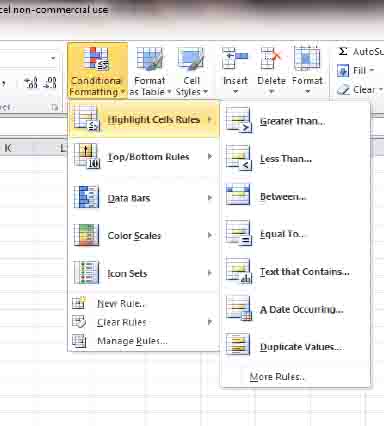
Figure 5–82. Conditional formatting rules
- Select
Greater Than…, and you'll see the dialog in Figure 5–83.
Figure 5–83. We're looking for cells greater than 90. The 80.5 is a default selection, which Excel computed by averaging the highest and lowest scores in the range.
- Type 90 in the
Format Cells that are GREATER THAN:field. We've established our condition: test scores above 90. - Click the drop-down arrow along the
Light Red Fill with Dark Red Textentry. That's Excel's default, telling you that if any selected cell meets your condition, it will turn light red, and its text will appear as dark red. But we want our cells to turn blue instead, so click theCustom Format…option. You'll see theFormat Cellsdialog box, as shown in Figure 5–84. - Click the
Filltab, because we want the cells that meet our condition to turn blue, not the text in those cells. - Click a blue color in the resulting palette. Click
OK.
Figure 5–84. Color scheme: Selecting a cell formatting color
- You'll be brought back to the
Greater Thandialog box. ClickOK. - Turn off the blue selection color surrounding the test score range D6:D15. You'll see the content shown in Figure 5–85.

Figure 5–85. Well done, Quincy!
To summarize, we used the conditional formatting feature to highlight all the cells that meet a condition we specified—in this case, all test scores over 90. We selected the cells we wanted to analyze, clicked the appropriate conditional formatting option (in this case the Greater Than… option), entered our greater-than-90 criterion, and then chose the color we wanted to apply to the cells that met the condition. And we see that only Quincy surpassed the 90 mark.
Looking for Scores Equal to or Greater Than 90
Now, what if we're looking instead for all scores equaling or bettering 90? There's more than one option here. We could click Highlight Cells Rules instead of the original ![]() Between…
Between…Greater Than…, which would reveal the dialog box shown in Figure 5–86.

Figure 5–86. One approach to looking for scores equal to or greater than 90
We'd then enter 90 in the first field, and 100 in the other, and then click OK. The rest of the process would be identical to the first exercise.
An Alternative Approach to the Same Result
The second option would take us to this command sequence:
- Select
Highlight Cells Rules, as shown in Figure 5–87. More Rules…
More Rules…
Figure 5–87. Rules are made to be … followed.
- Then select
Format only cells that contain, and thengreater than or equal to, as in Figure 5–88.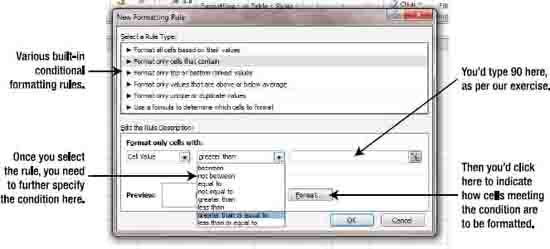
Figure 5–88. Plan B
- Click and then type 90 in the blank field to the right of greater than or equal to.
- Then click
FormatandOK, and once again you'll be brought back to theFormat Cellsdialog box. And as with the other examples, you need to decide which sort of formatting change to introduce.
Just keep in mind that when you institute a conditional format, you can change the appearance of the text in cells (e.g., its font, color, or boldface/italics status) that meet your condition, as well as the color of the cell itself.
Some Additional Conditional Formatting Options
Again, Excel makes many other conditional formatting options available. Let's just look at two more.
- Select the test data cells again and click
Conditional Formatting
Top/Bottom Rules. You'll see the options shown in Figure 5–89.
Figure 5–89. Average white cells: Finding test scores above the class average
- Click
Above Average…, and you'll be brought to the dialog shown in Figure 5–90.
Figure 5–90. Note that the above-average scores are tinted red in preview mode even before you click OK.
- Click
OKnow, meaning that you're accepting Excel'sLight Red Fill with Dark Red Textdefault conditional format. You'll see that all test scores exceeding the class average will exhibit exactly that—their cells will appear in light red, and the text in those cells will appear in dark red.
And conditional formats are dynamic, meaning that if you change the data with which you're working, the formats will change correspondingly. If you enter 100 for Edith's grade, for example, her cell will immediately turn light red with dark red text, because it now exceeds the class average—and Sally's grade of 80 will lose that formatting, because her grade will now fall below the average.
Turning Off Conditional Formatting
If you want to turn off your conditional formats and restore the cells to their original, black-text-on-white-background appearance, do the following:
- Select the cells.
- Click
Conditional Formatting
Clear Rules
Clear Rules from Selected Cells(orfrom Entire Sheet, if that's what you want to do).
Using Data Bars: A Different Kind of Conditional Format
- Here's one more conditional format option of a very different sort. Instead of coloring cells or their backgrounds on the basis of specified conditions, data bars occupy conditionally formatted cells with mini bar charts, which are proportioned to the values in those cells. Select the test data.
- Click
Conditional Formatting
Data Bars. - Hover the mouse over the first
Gradient Filloption, and you'll see the options shown in Figure 5–91.

Figure 5–91. Grades and gradients: Applying gradient bars to the test scores
What's happened—or what will happen if you go ahead and click—is the application of a mini–bar chart inside each cell displaying a test score. Note that the bar in Quincy's 93—the highest score in the class—fills the entire cell, and the other bars are sized in proportion to that 93. If you enter 100 in Edith's cell again, her bar that will occupy the entire cell, with the other cells proportioned to her grade.
NOTE: If you widen the column in which the data bars appear, the disparity in bar lengths between various grades will seem more pronounced.
Summary
Making your worksheets look good is an important part of the spreadsheet-building process. Excel's formatting options provide you with a heap of ways to do just that. Now we can move to another way—really, a group of ways—to present your data with striking visual appeal. The next chapter will introduce you to the world of charts.
